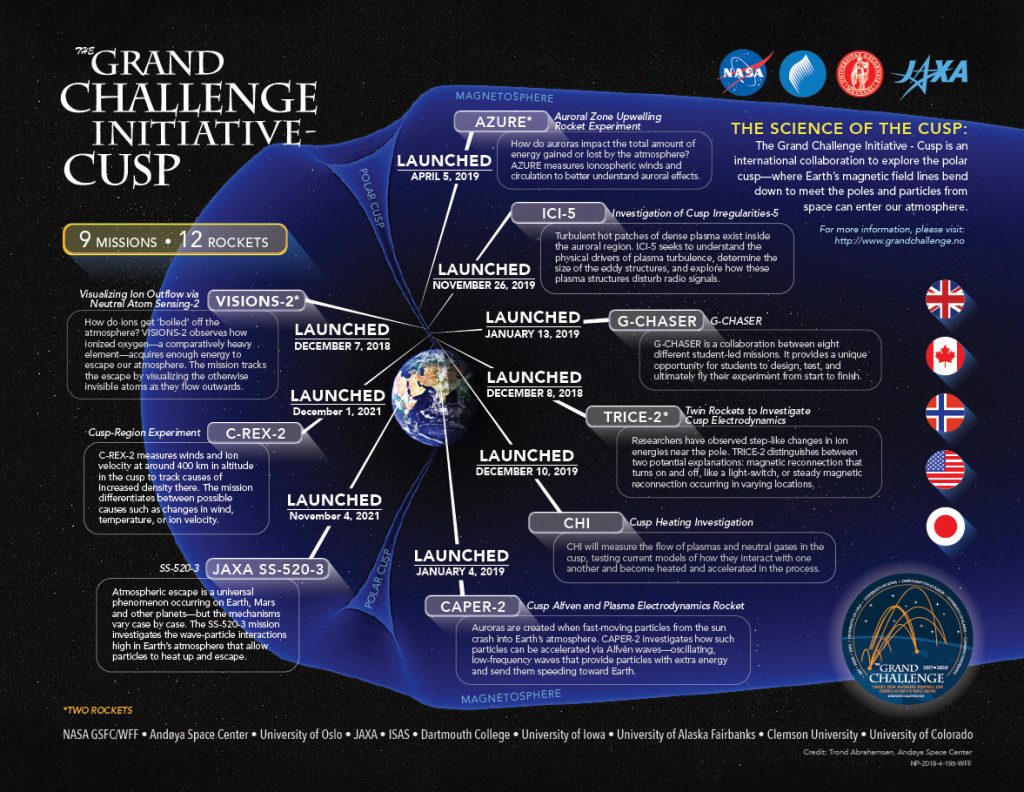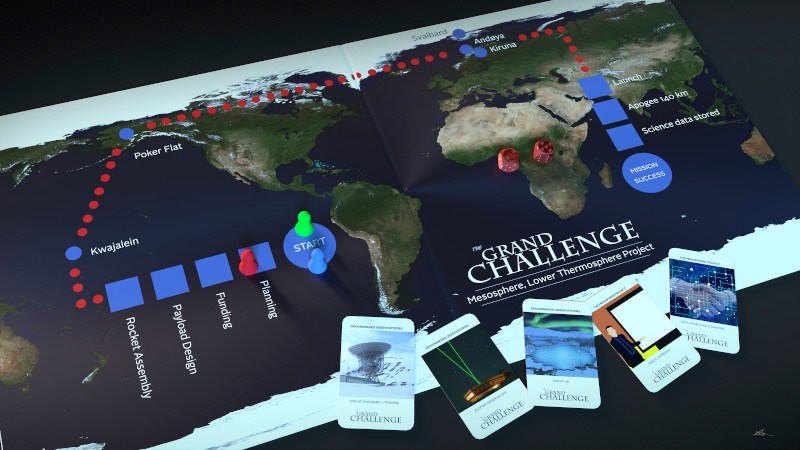The Grand Challenge Initiative – CUSP is a large-scale international collaboration effort targeting advancement in specific, fundamental issues in space and earth science.
The first GCI project – GCI Cusp – aims to determine the multi-scale physics of heating and charged particle precipitation in the ionosphere specific to the geomagnetic cusp region.
Download the info leaflet:

GCI Mesosphere / Lower Thermosphere (M/LT) aims to study the M/LT region with both new and well proven techniques using a multitude of plattforms and instruments. Recent theoretical and modelling developments allow for study of dynamic processes on a large range of scales – including the potential impact of small scale processes on a global scale.

Related News and Blogs
Tajanstvena pojava na severnom polu Zemlje zabrinula NASA (VIDEO)
КОСМОС: Новые миссии НАСА позволят понять, почему техника «сходит с ума» у полюсов Земли
Missões da Nasa estudam o que causa a falta de sinais tecnológicos nos polos terrestres
NASA launches mission to solve polar mystery: ‘One of hardest questions in physics’
NASA launches mission to solve polar mystery: ‘One of hardest questions in physics’
NASA rockets study why tech goes haywire near poles
NASA rockets study why tech goes haywire near poles
NASA Will Launch Rockets In The Arctic Region To Study Tech Disruption
Why NASA is sending rockets into Earth’s leaky atmosphere
Grand Challenge-Cusp Graphics (updated)
NASA Joins International Science Team in Exploring Auroral Cusp from Norway
Svalbard at the centre of a giant rocket project
Understanding the aurora: the Grand Challenge Initiative – Cusp
Science on the Cusp: Sounding Rockets Head North
These NASA Rocket Launches to Study Earth’s Atmosphere Are Just Gorgeous
Grand Challenge Initiative – Rocket Campaign at Andøya Space Center
Wallops-supported sounding rockets launch in Norway
NASA Sounding Rockets Carry TRICE-2 over Norwegian Sea
Fire NASA-raketter klare til oppskytning fra Norge
Norsk teknologi blir del av NASA-raketter
GCI CUSP Infographic
Download a PDF with all the essential information
NASA will release a colorful gas into the air to see how solar winds cause the northern lights
NASA Joins International Science Team in Exploring Auroral Cusp from Norway
Eleven rockets set to reveal the mysteries in the Earth’s atmosphere

